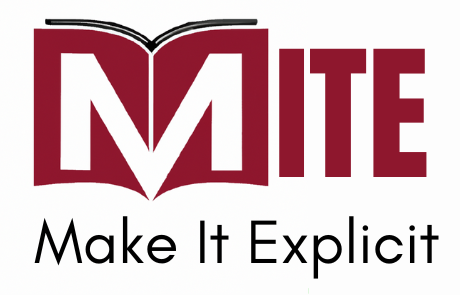Talks by Francesco Orilia and James Phelan
Speaker: Francesco ORILIA (Università di Macerata)
Title of talk: Fictional Objects, Stories and Denoting Concepts (slides)
Abstract: Given an appropriate logical framework, noun phrases such as “every man,” “some man” or “the tallest spy,” can be taken to stand for properties of properties, which we may call denoting concepts (in the terminology of Russell’s Principles of Mathematics); in particular, the denoting concepts corresponding to definite descriptions may be called definite denoting concepts. Following a line first proposed by Nino Cocchiarella, I have defended the view that fictional objects, such as Pinocchio or Madame Bovary, are definite denoting concepts, somehow occurring in stories. Stories in turn are complex propositions somehow expressed by fictional works. In this talk I would like to clarify the main aspects and advantages of this approach and illustrate how it deals with some important data regarding the identity of ficta across different stories.
Bio: Francesco Orilia is a Full Professor of Philosophy of Language at the University of Macerata. His research interests cover (with lots of publications) the problem of reference, the ontology of properties and relations, of fictional entities and of time, as well as deontic logic. Among his books, it is especially worth recalling: Ulisse, il quadrato rotondo e l’attuale re di Francia (ETS, 2002), Filosofia del tempo. Il dibattito contemporaneo (Carocci, 2012), Singular Reference: A Descriptivist Perspective (Springer, 2012). At first together with Chris Swoyer and then together with Michele Paolini Paoletti, he has also written the entry on properties in the Stanford Encyclopedia of Philosophy.
Suggested readings:
Castañeda, H.-N., “Fiction and Reality: Their Fundamental Connections,” Poetics, 8, 1979, pp. 31- 62; rist. with changes in Castañeda, Thinking, Language and Experience, University of Minnesota Press, Minneapolis 1989, pp. 176-205
Cocchiarella, N. B., Formal Ontology and Conceptual Realism, Springer, Dordrecht 2007.
Orilia, F. “A Theory of Fictional Entities Based on Denoting Concepts,” Revue internationale de philosophie, 66, 2012, pp. 577-592.
Speaker: James PHELAN (University of Ohio)
Title of talk: ‘Characters Are Synthetic Constructs’: So What? (slides)
Abstract: Working within a conception of narrative as rhetoric, I have previously proposed that fictional character it is an element of narrative that has three simultaneously-existing components: the mimetic (character as an individual possible person); the thematic (character as representative of a group, an idea, or a set of ideas); and the synthetic (character as a construct within the larger construct of the whole narrative). The rhetorical dimension of this proposal is that both storytellers and their audiences implicitly work with this conception of character, and that both are flexible enough to have different components be more or less prominent as they move from one narrative to another. In this talk, I want to explore some of the consequences of the least controversial—and therefore, the least examined–part of this proposal, the stipulation that fictional characters are synthetic constructs. (Character theorists of all persuasions readily grant this stipulation, even though some use different terms; Alex Woloch, to take just one example, discusses character as having “reference” and “structure,” terms that correspond fairly well with “mimetic” and “synthetic.”) My hypothesis is that authorial and readerly awareness of the synthetic component of fictional character operates as tacit knowledge that has profound effects on both the construction and reception of fictional narratives that narrative theorists have not yet done justice to. In this respect, my talk asks, “how can I further develop a rhetorical theory of fictional character by making this tacit knowledge explicit?” I will pursue my answers by doing some theorizing about a rhetorical understanding of fictionality and by analyzing two case studies: Roddy Doyle’s “Worms,” a story committed to mimetic realism that audaciously leaves the fate of its main characters unresolved; and T.C. Boyle’s “Chicxulub,” another story committed to mimetic realism whose powerful surprise ending depends on the sudden introduction of a minor character.
Bio: James Phelan, Distinguished University Professor of English at Ohio State University, has devoted his research to thinking through the consequences of conceiving of narrative as rhetoric. Since 1993, he has been the editor of Narrative and co-editor of the Theory and Interpretation of Narrative Series at the Ohio State University Press. His first extended treatment of character was in Reading People, Reading Plots: Character Progression, and the Interpretation of Narrative (1989). His recent publications include Somebody Telling Somebody Else (2017), Debating Rhetorical Narratology (2020, with Matthew Clark), the co-edited volume Fictionality in Literature: Core Concepts Revisited (2021), and Narrative Medicine: A Rhetorical Rx (2023). Since 2021, he has been the host of the Project Narrative Podcast <https://podcasts.apple.com/mt/podcast/project-narrative/id1593928722>. In 2021, he received the Wayne C. Booth Lifetime Achievement Award from the International Society for the Study of Narrative.
Suggested Readings:
Boyle, T.C. “Chicxulub.” Tooth and Claw. New York: Penguin, 2005. 133-44.
Doyle, Roddy.“Worms.” Life without Children. New York: Viking, 2021. 128-48.
Phelan, James. “Introduction.” Reading People, Reading Plots: Character, Progression, and the Interpretation of Narrative. Chicago: University of Chicago Press, 1989.
Phelan, James. “Character as Rhetorical Resource: Mimetic, Thematic, and Synthetic in Fiction and Non-Fiction.” Narrative 30 (2022): 256-63.
Woloch, Alex. The One Vs. the Many: Minor Characters and the Space of the Protagonist in the Novel. Princeton: Princeton University Press, 20°3.
